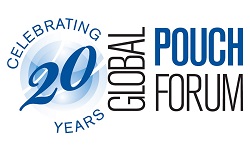Cover Story
2017 Bag- & Pouch-Making Study






What types of bags and pouches are brand owners, converters and suppliers going to purchase in the next year? Are they likely to purchase or lease new bag- and pouch-related equipment? What are the effects of industry automation in packaging?
These are just a few of the key objectives Flexible Packaging’s sister publication Packaging Strategies wanted to cover for the 2017 Bag and Pouch Making eBook Study, which was conducted in partnership with BNP Media’s market research division.
The online survey was distributed March 31-April 14, 2017, to 18,616 active, qualified Packaging Strategies and/or Flexible Packaging subscribers who are involved with the manufacturing or filling of bags or pouches.
Forty-four percent of respondents identified themselves as a CPG/end user/brand owner/manufacturer followed by 25 percent who identified themselves as a converter, 13 percent as a contract packer or co-packer, 11 percent as a material supplier, and 5 percent as an OEM/equipment supplier.
Respondents to the survey said they’re involved in a variety of products and services, with a leading 21 percent being involved with meat, poultry and seafood, followed by 16 percent of respondents handling bakery products or snack foods.
In terms of equipment used, the majority (77 percent) of respondents said they use bag- and pouch-related machinery, followed by two-thirds (65 percent) using secondary packaging equipment and/or slitter/rewinders. Others said they use printing presses (55 percent), coating/laminators (52 percent), inspection/testing machinery (52 percent), laser cutters (32 percent), digital printing presses (26 percent) or other (6 percent), which may include bag fillers, weighters and conveyors.
Here’s a closer look at some of the findings:
How Companies Are Involved
Nearly an equal number of respondents to the survey either manufacture/develop premade bags/pouches or fill them with product, while one-fifth (18 percent) said they’re involved with both functions.
Among the types of bags/pouches that companies plan to manufacture or purchase in the next year, gusseted bags came in on top at 65 percent, followed by standup pouches (60 percent), flat-bottom (51 percent), spouted pouch (29 percent) and retort (25 percent). Seven percent of respondents said they do not plan to make or purchase any form of bags/pouches in the next year.
In terms of equipment, a majority (68 percent) of respondents reported having up to 10 bag/pouch machines at their facilities, and 55 percent expect to purchase, rent or lease new bag-/pouch-related machinery in the next year.
On average, 17 percent of a company’s budget was allotted to bag-/pouch-specific equipment/machinery in 2016. Plant operations and production job functions are most likely to be involved in the bag/pouch machine purchase decision, with user-friendly interface, changeover time and price as the top three criteria for machine selection.
Biggest Trends and Challenges
CPGs, brand owners and manufacturers report leakage and seals of packs to be the biggest challenge for bags/pouches, while all others report cost as the biggest challenge. For trends, non-CPG respondents consider sustainability to be the biggest trend in bag-/pouch-specific packaging, while CPGs are driven by customer demand.
Adapting to Automation
The study shows that non-CPG respondents appear to be adapting faster to automation by investing in new equipment with better diagnostics or with less labor required. CPGs, brand owners and manufacturers, on the other hand, have been slower to adapt to the technological change.
For more information and to see other studies that have been conducted, visit www.packagingstrategies.com/studies.
Looking for a reprint of this article?
From high-res PDFs to custom plaques, order your copy today!









